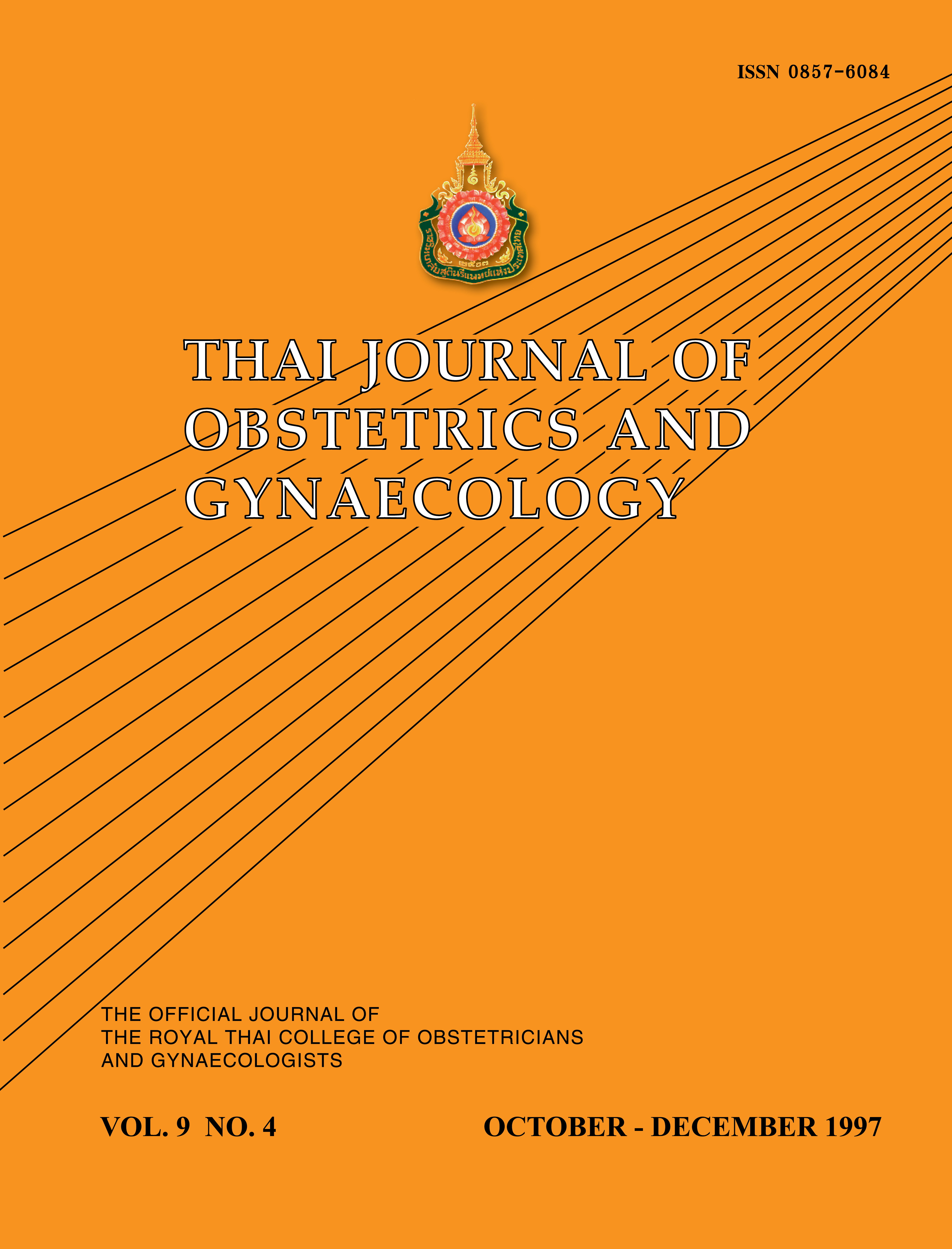Fetal Imaging : MRI Versus Ultrasound
Main Article Content
Abstract
Objective: To compare the ultrasound images with magnetic resonance imaging (MRI) in demonstrating abnormal fetal structures. Design Case series.
Setting Division of Maternal-Fetal Medicine, Faculty of Medicine, Chulalongkorn University.
Subjects and methods Five patients whose gestational ages ranged from 31 to 38 weeks. All had previously undergone a transabdominal or transvaginal ultrasound examination showing fetal anomalies, then all patients were imaged with standard spin echo sequences T, -weighted image. Fast spin-echo sequences were per formed on T, -weighted images.
Results Three cases had abnormality of the brain, ie. microcephaly with encepha locele, occipital encephalocele and porencephaly. The other two cases were omphalocele and phocomelia. MRI gave more information than ultrasound in case of occipital encephalocele, microcephaly with encephalocele and porencephaly.
Conclusion Ultrasound remains the first choice of screening method for imaging the fetus in utero. MRI is a valid second-step diagnostic tool in pregnancy for further assessment of sonographically detected malformation especially those involving central nervous system.
Article Details

This work is licensed under a Creative Commons Attribution-NonCommercial-NoDerivatives 4.0 International License.


